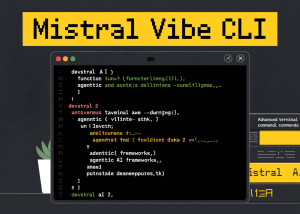Luma AI releases Ray2 video generator with better physics

Join our daily and weekly newsletters for the latest updates and exclusive content on industry-leading AI coverage. Learn More
Luma AI made waves with the launch of its Dream Machine generative AI video creation platform last summer.
Of course, while that was only seven short months ago, the AI video space has advanced rapidly with the release of many new AI video creation models from rival startups in the U.S. and China, including Runway, Kling, Pika 2.0, OpenAI’s Sora, Google’s Veo 2, MiniMax’s Hailuo and open source alternatives such as Hotshot and Genmo’s Mochi 1, to name but a few. Even Luma itself recently updated its Dream Machine platform to include new still image generation and brainstorming boards, and also debuted an iOS app.
But the updates continue: Today, the San Francisco-based Luma released Ray2, its newest video AI generation model, available now through its Dream Machine website and mobile apps for paying subscribers (to start).
The model offers “fast, natural coherent motion and physics,” according to Luma AI co-founder and CEO Amit Jain on his X account, and was trained with 10 times more compute than the original Luma AI video model, Ray1.
“This skyrockets the success rate of usable production-ready generations and makes video storytelling accessible to a lot more people,” Jain added.
Luma’s Dream Machine web platform offers a free tier with 720 pixel generations capped at a variable number each month: Paid plans begin at $6.99 per month: From “Lite,” which offers 1080p visuals, to Plus ($20.99/month), to Unlimited ($66.49/month) and Enterprise ($1,672.92/year).
A leap forward in video gen
Right now, Luma’s Ray2 is limited to tex-to-video, allowing users to type in descriptions that are transformed into 5 or 10 second video clips.
The model can generate new videos in a matter of seconds, although right now it can take minutes at a time due to a crush of demand from new users.
Examples shared by Luma and early testers in its Creators program showcase the model’s versatility, including a man running through an Antarctic snowstorm surrounded by explosions, and a ballerina performing on an ice floe in the Arctic.
Impressively, all the motions in the example videos appear lifelike and fluid — and often, with subjects moving much faster and more naturally than videos from rival AI generators, which often appear to generate in slow motion.
The model can even create realistic versions of surreal ideas such as a giraffe surfing, as X user @JeffSynthesized demonstrated. “Ray 2 is the real deal,” he wrote on X.
Other AI video creators who have tried the new model seem to largely agree, with Jerrod Lew posting on X: “Improved cinematography, lighting and realism has arrived and it’s awesome.”
“…it’s so good!” AI video artist Heather Cooper chimed in.
My own tests were a mixed bag, with some more complex prompts creating unnatural and glitchy results. But when it did produce clips that resembled more of what I had in mind in my prompts — such as fencers crossing swords aboard a space station orbiting Jupiter — it was undeniably impressive.
Jain said Luma will also add image-to-video, video-to-video and editing capabilities to Ray2 in the future, further expanding the tool’s creative possibilities.
To celebrate the launch of Ray2, Luma Labs is hosting the Ray2 Awards, offering creators the chance to win up to $7,000 in prizes. These include:
A large scale award: The creator whose Ray2 content garners the most views on a single platform during the first week of launch will win $5,000. Submissions are due by January 22, 2025.
A raffle for $3,000: Creators can enter by sharing Ray2 content on social media and engaging with Luma AI’s launch video. The deadline for participation is also January 22.
Winners of both awards will be announced on January 27. Submissions can be uploaded via forms provided by Luma Labs, and creators are encouraged to use hashtags #Ray2 and #DreamMachine when sharing their work.
Additionally, Luma Labs has launched an affiliate program, allowing participants to earn commissions by promoting its tools.












